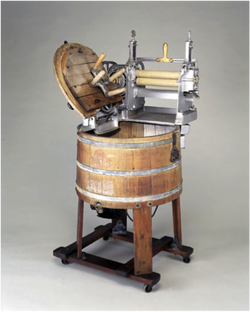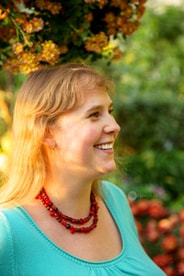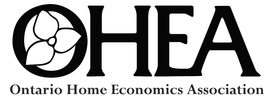|
By Maria Depenweiller, P.H.Ec. Here is something to ponder the next time you are sorting out your laundry, one of probably the most unappreciated household chores.  Ancient Roman Laundry As we know, almost everything new is well forgotten old. This is particularly true in the case of ancient Roman laundry. With their well developed urban systems Romans were the first to offer public laundry services. Fullones, the clothes washers, were in charge of washing and cleaning the garments of the Roman citizens. As the Romans generally wore clothes made out of wool (there was no cotton in ancient Rome) they needed frequent washing in the hot climate of Italy. The way in which this was done has been described by Pliny and other writers, but is most clearly explained by some paintings which have been found on the walls of a fullonica (laundry service) at Pompeii. In ancient Rome laundry was a man’s job. The clothes were first washed, which was done in tubs or vats, where they were trodden upon and stamped by the feet of the fullones. After the clothes had been washed, they were hung out to dry, and were allowed to be placed in the street before the doors of the fullonica. When dry, the wool was brushed and carded to raise the nap, sometimes with the skin of a hedgehog, and sometimes with some plants of the thistle kind. The clothes were then hung on a special basket - viminea cavea, under which sulphur was placed in order to whiten the cloth (just imagine the odour!). A fine white earth, called cimolian by Pliny, was often rubbed into the cloth to increase its whiteness. Ancient Europe Laundry Unlike the ancient Rome, medieval Europeans tended to rely on their own forces rather than public services when it came to laundry. Most often this was done on river banks, even if the rivers were frozen. Special tools were used for this purpose – washing bats and scrubbing boards. They were used to agitate the clothing in running water to force the dirt out and to smooth the fabric during drying. No ironing was done at that time. After thorough wash the garments were laid out flat on the ground to allow the sun do the bleaching and drying. Clearly such an exercise was not a weekly routine and was only done once in a while, whenever a large enough amount of dirty clothes accumulated. Finer parts such as lace collars, trimmings and fine under shirts were laundered separately and more often with less aggressive methods. Soap, mainly soft soap made from ash lye and animal fat, was used by washerwoman who were paid for their work. Soap was rarely used by the poorest people in medieval times but by the 18th century soap was fairly widespread: sometimes kept for finer clothing and for tackling stains, not used for the whole wash. Starch and bluing were also available for better quality linen and clothing. The First Washing Machines  Hand (or feet) laundry washing reigned for centuries until the first washing machine was designed by H. Sidgier of Great Britain in 1782. It consisted of a cage with wooden rods and a handle for turning From this design in the late 1800's different companies started producing hand operated machines that used paddles or dollies. Then came the revolving drum from James King in 1851. This was shortly followed by a revolving drum with reversing action, from Hamilton Smith in 1858. The earliest manual washing machines imitated the motion of the human hand on the washboard, by using a lever to move one curved surface over another and rubbing clothes between two ribbed surfaces. This type of washer was first patented in the United States in 1846 and survived as late as 1927 in the Montgomery Ward catalogue. The first electric clothes washers, in which a motor rotated the tub, were introduced into America about 1900. The motor was not protected beneath the machine and water often dripped into it causing short-circuits and jolting shocks. By 1911, it was possible to buy oscillating, cylinder, domestic washing machines with sheet metal tubs mounted on angle-iron frames with perforated metal or wooden slat cylinders inside. Beatty Brothers of Fergus, Ontario was the first company to produce an agitator washing machine. The early Beatty machines had ribbed copper tubs which were nickel or nickel-chromium plated. In the US, the first firm to adopt agitator technology was Maytag. The vertical orientation of these machines became the industry standard replacing the horizontal rotating axis of earlier machines. Starting in the 1920s, white enamelled sheet metal replaced the copper tub and angle-iron legs. By the early 1940s, enamelled steel was used and sold as being more sanitary, easier to clean and longer lasting than the other finishes. The sheet-metal skirt was also designed to extend below the level of the motor mount. In the early 1920s, a number of Canadian machines were offered with built-in gas or electric water heaters. By the 1930s, domestic water heaters were in many homes and the washing machine heater was of little use. The addition of a motor-driven drain pump at this time moved the machine one step closer to complete automaticity. The next development of the washing machine was the fitting of a clock timing device which allowed the machine to be set to operate for a pre-determined length of wash cycle. Now, the operator no longer needed to constantly monitor its action. By the early 1950s, many American manufacturers were supplying machines with a spin-dry feature to replace the wringer which removed buttons, and caused accidents involving hair and hands. In 1957, GE introduced a washing machine equipped with 5 push buttons to control wash temperature, rinse temperature, agitation speed and spin speed. Not bad progress for a household chore, don’t you think?  Maria Depenweiller is the owner of The Wooden Spoon, a consulting service, that provides services such as cooking classes, educational seminars and workshops, recipe development and testing as well as food writing. Maria is the author of several books in Russian language on food history and low protein cooking. For further details please www.thewoodenspoon.ca Maria is a Toronto-based Professional Home Economist and an active member of the Ontario Home Economics Association (OHEA), Ontario Home Economists in Business (OHEIB), and a newsletter editor for the Toronto Home Economist Association (THEA). Ontario Home Economics Association © 2013
7 Comments
3/4/2020 04:37:19 am
I enjoyed your article. feelings are more important than offering content Thanks for sharing useful information
Reply
11/11/2021 08:40:16 am
It was interesting to learn about the history of laundry. I could never imagine how things would be without technology. Great blog by the way.
Reply
11/11/2021 08:45:56 am
I'm impressed with the quality housekeeping service! I would definitely recommend this to my friends.
Reply
Leave a Reply. |
The Ontario Home Economics Association, a self-regulating body of professional Home Economists, promotes high professional standards among its members so that they may assist families and individuals to achieve and maintain a desirable quality of life. Categories
All
Archives
April 2024
|
|
Subscribe to our mailing list
|
|
Unsubscribe from our mailing list
|
Copyright © 2023 Ontario Home Economics Association (OHEA). All Rights Reserved.


 RSS Feed
RSS Feed